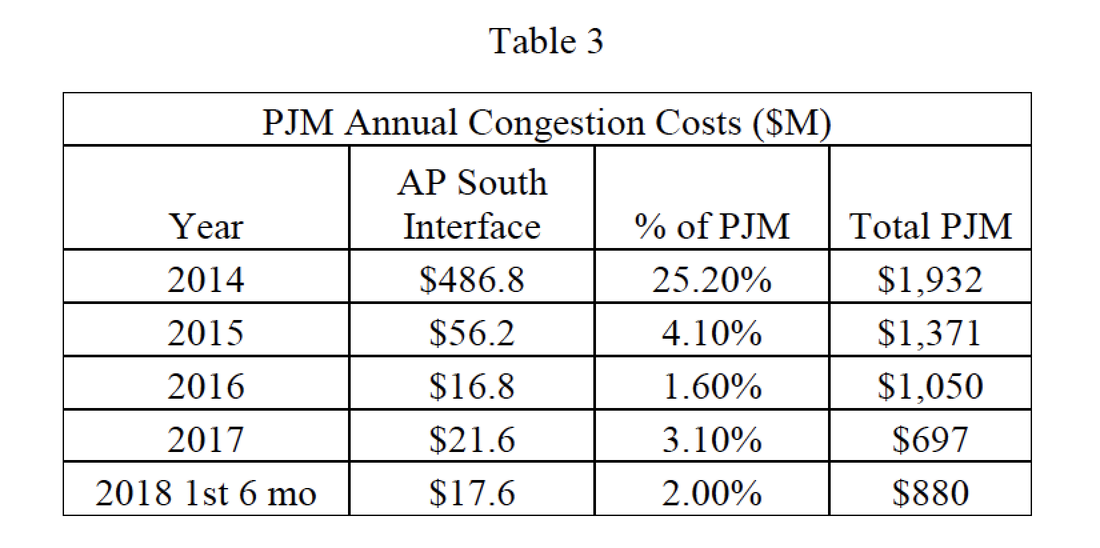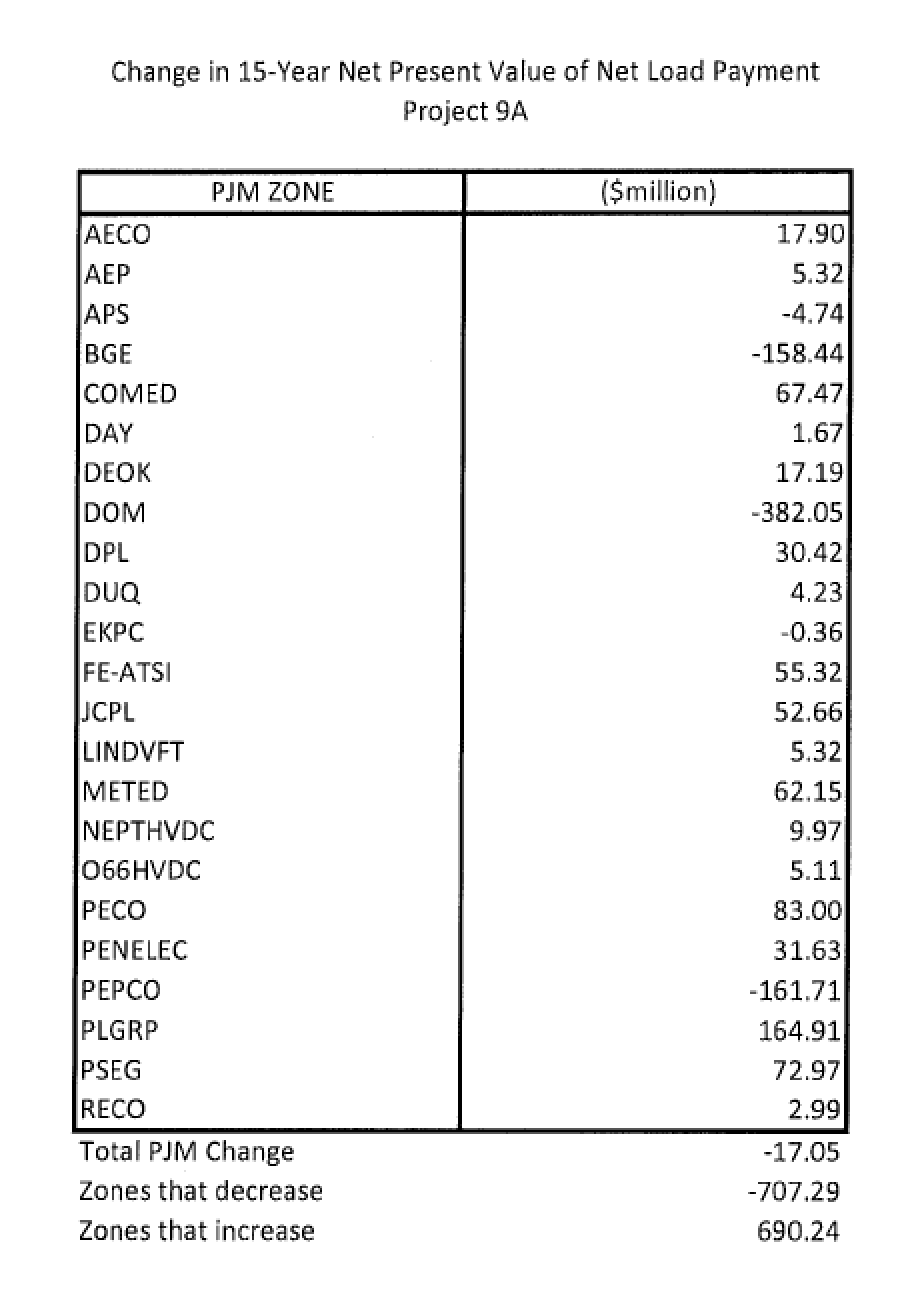Peter Lanzalotta is a electric power engineer who takes a look at PJM's dreadful planning process and the other viable options PJM didn't consider when evaluating the Transource project.
First, neither Transource nor PJM considered minimizing the environmental impacts of new
transmission ROW and new transmission towers proposed for the IEC. As discussed later in my testimony, there are two existing available PPL transmission lines on existing rights-of-way, recently completely rebuilt with towers that have the capability of carrying an additional 230 kV circuit in the vicinity of the IEC East Project Line. PJM did not consider trying to use these as part of the IEC, because such use was not included as part of any of the proposals submitted to PJM. Such use could significantly reduce the environmental impact of this portion of the IEC.
In addition, PJM's shoddy attempt at competitive transmission creates another senseless conundrum. PJM only considers projects that are submitted in the competitive window, even if better solutions are available. PJM pretends to have no idea what existing transmission assets are out there (belief in this is hard, I know) and would have no way of determining that a transmission need could be met cheaper and faster by using existing infrastructure. Perhaps it's time for PJM to re-evaluate its process here. FERC's Order 1000 that instituted competitive transmission processes was supposed to be for the purpose of saving consumers money on necessary transmission. PJM's attempt at process has lost sight of the goal. The tail is wagging the dog here.
Lanzalotta next disposes of Transource's claims in the media that its project improves reliability.
Q. Transource witness Ali testified that an additional benefit of this Project was that it would also improve reliability. How do you respond?
A. Any major new piece of transmission line infrastructure will provide additional paths for power to flow, and thus could potentially improve reliability. However, there is no stated reliability need here, based on the Company’s filed testimony.
So, what is the purpose of this project?
PJM solicited proposals to address congestion on the AP South Reactive Interface (“APSRI”) as part of its 2014/15 Long Term Proposal Window. The APSRI is a set of four 500 kV transmission lines running from West Virginia into Maryland and Virginia. If the sum of the power flows over these four lines exceeds certain calculated limits, then the electric system can be susceptible to low voltages or voltage collapse under certain operating conditions. The power flow across the APSRI must be kept within these limits. Sometimes that means that less expensive-to-operate generating units outside of Maryland and Virginia will be backed down to generate less power, while more expensive-to-operate generating units inside Maryland and Virginia will be ramped up to generate more power, thus resulting in decreased power flows across the APSRI and increased generation costs for Maryland, DC, and Virginia customers.10 Transource witness Paul McGlynn references the PJM Independent Market Monitor, which has estimated that congestion costs on the APSRI were about $800 million from 2012 through 2016. The IEC reduces congestion costs on the APSRI by providing an alternative path to load centers in Maryland, DC, and Virginia, connecting them mainly to lower-cost generating units located outside of these areas.
As Table 3 shows, the annual congestion costs due to the AP South Interface have been sharply declining since 2014 both in absolute terms and as a percentage of PJM total congestion costs. The 2017 annual congestion cost due to the AP South Interface has decreased by more than 95% from 2014. Table 3 also shows the total decline in PJM
congestion costs since 2014. For 2014, total PJM congestion is $1.98 billion. For 2017, total PJM congestion has decreased to $697 million. This means that total congestion on PJM’s transmission system has decreased by more than 60% over the past three years.
Lanzalotta takes a look at PJM's benefit-cost ratio for this project and finds...
One of the major shortcomings of PJM’s process of determining the B/C ratios of the IEC Project is that the costs of the project elements have not been updated since the project was initially evaluated in 2015.
Another issue with the B/C ratio is the fact that PJM's electric load forecasts are way too high. Historically, they always have been. This is nothing new, however, PJM refuses to acknowledge this fact. And magic math is born.
Summer peak loads and peak load forecasts have been declining across PJM’s Mid-Atlantic area for at least the past five years or more. This area includes loads in New Jersey, Maryland, Delaware, DC, and Pennsylvania, some of which are loads that contribute to the projected loads on the IEC Project transmission lines.
In recent months, there have been proposals of new renewable resource generating units
proposed to be located in Maryland and Virginia on the load-side of the APSRI. On July
24, 2018, Dominion Energy announced new plans to add 3,000 MW of new solar and wind generation during the 2020s. The Dominion announcement also referenced plans to add 240 MW of solar generation to be located in Virginia. There is no indication that the effects of any of these recent proposals, which could reduce the amount of load in Maryland and Virginia potentially being served over the APSRI, have been reflected in PJM evaluations of the IEC Project.
There are also non-transmission alternatives that could address the load requirements in the MD-DC-VA area and reduce any congestion levels that currently exist in the Project area and without the impact on land, the environment and communities that have been identified in the public input hearings and site views.
All in all, this is the BEST testimony I have seen filed in any state transmission permitting case (and I've seen a lot of them over the years). Bravo to the Pennsylvania Consumer Advocate's office for so skillfully fulfilling it's mission for benefit of electric consumers. Perhaps PJM should take some notes so it may begin to reform itself to actually serve consumers?
We don't need the Transource IEC project and it will not be approved. Isn't it time for, at the very least, putting this project in abeyance until further studies can be performed? We simply must stop the waste of consumers' money going on here for a project that will never be constructed.



 RSS Feed
RSS Feed